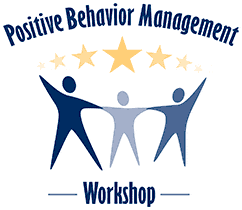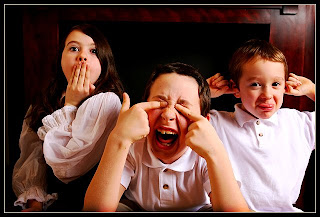
Attract money, power, and wealth
Achieve all of your goals quickly and easily
Improve every aspect of your life & experience absolute happiness
Boost your sex life
Improve your health, marriage, lose weight, or anything else your heart desires .
Mind Power- Inner Psychology to Success
The term mind power and the subconscious mind power are described in many different ways. In the psychosomatic sense mind power is labeled as ability to have emotions, imagination, memory, and will; and subconscious mind power is labeled as part of the normal individual’s personality in which mental processes function without consciousness under normal waking conditions.
Contents
1. How Mind Power and Subconscious Mind Power work
2. How to use Subconscious Mind for success
Mind power is our conscious mind, the way we think. The mind is similar to a constantly flowing spring however a natural spring cannot send forth fresh water and bitter from the same opening, nor yield both salt water and fresh. So it is with the mind and its thoughts; it cannot equally think negative and positive thoughts at the same time. One will rule the other.
Since the mind reflects habitual thoughts, it is therefore our responsibility to influence our mind and brain with positive emotions, thoughts and energy as the dominating factors in our mind. Mind power is beyond positive thinking or brain power, it is thinking than believing what you think that will manifest your reality. Since this mind power is power of thought and beliefs, and these thoughts and beliefs will create the outcome of your now, you will want to stay aware to the reflections you are thinking.
Now mind power is a dual system that includes your power of thought(brain) and your subconscious mind. We all have subconscious mind power; it can be as small as smiling at your boss in the hopes of improving the odds of acquiring a raise.
It can be the way you unconsciously handle a situation whether appropriately or not. Power of the subconscious mind comes from the thoughts and beliefs of your the power of the your mind. However you think and believe is what your subconscious mind power will produce. This is done continuously, one minute at a time. Every thought nourished regularly by your mind power will activate your subconscious mind to generate those thoughts and energy whether good or bad into your life. This is how you’re present and future is created.
Your mind power and your subconscious mind work together and they fashion your reality. Let’s use a parallel to help you visualize how this works. Your subconscious mind power is similar to fertile soil that consents to any seed planted inside it. Your habitual thoughts and beliefs are the seeds which are being continually sown and they will eventually produce a crop. So if you plant weeds you will get weeds, if you plant fruit, you will get fruit. In other words, you reap what you sow. Now the conscious mind is the gardener, and it is the mind power to choose what reaches our inner garden- the subconscious.
Unfortunately, most of us do not have green thumbs because of lack of knowledge of this law, the psychology behind this success and because of this ignorance we have allowed all kinds of seeds, both good and bad, to enter. So our subconscious mind power will manifest failure, ill health and all kinds of misfortunes just as effortlessly as it will manifest success and abundance. However, it cannot manifest it both at the same time, which is why the need to constantly actuate the positive until the fertile soil of your subconscious mind power reaps only abundance. Success is only a choice away.
Healing Power of the Mind - The Best Medicine
When you have just recovered from illness like heart attack, stroke, your doctor will always give you advice on how to regain back your health. These advices can be quit smoking, a balanced diet and regular exercise and also take your medicine regularly.. However, other than these advices, the healing power of the mind is also an essential and powerful weapon and medicine to your road to recovery. In 2002, the Mayo Clinic done a research and reported that people who are pessimistic about life don’t live as long and happily as optimistic people. The finding confirms what health professionals have believed for a long time. People who expect the worst and think of negative thoughts have more trouble coping with significant illness. Hopeful and optimistic people who are excited about their recovery recover more quickly and live more active lives. Bottom line: stay in touch with your mind, be in constant positive thought to activate the healing power of the mind.
How do constantly think of positive and healthy thoughts? First, determine on an easy task and take small and stable step to accomplishing it. Reward and take a break every time you achieve your target. Take note of your stress levels. If you become angry, feel hopeless or numb yourself through addictive behavior, actively adopt a brighter outlook. Just remember that though you do not have the power to control what really happens in your life, you have the power to take a positive response to the matter. Make a list of the things you want to accomplish, the places you want to go and the people you want to see and do something fun to stimulate a positive perspective.
You can make your mind to rapidly change your thoughts from negative to positive. If you find yourself thinking about your disabilities of your body, stop and start to appreciate all the things it can do and feel the excitement in you growing. Seriously limit or even stop going out with negative people unless they change. Try this exercise: Every time you stop at a light while you are driving, listen to your self talk. If you are thinking about a fight with your spouse, replaying a stressful and painful thought at work, or beating yourself up for running late to your next appointment, replace those thoughts by thinking about something good that happened during your day. Feel the joy in you. The healing power of the mind begins with your positive thoughts. Your mind is the most effective medicine to illnesses and constantly stay in touch with it.
You may ask if there is any connections between negative thoughts and illnesses. Well, I personally believe it does. When there is mental unrest, it affects the body as well. A physical symptom is a signal which your body is communicating to you to tell you that something is wrong and has to be dealt with. It is bringing to your attention a problem in your emotions, thinking or environment that is non-beneficial or harmful to you, so you can face it and resolve it.
Illnesses arise because the result of being ignorant of the constant signals our bodies alert us. When they become more serious, most people will then take actions to consciously change their state of mind to recovering it. However, there are still stubborn people who refuse to take action to change their mental and physical state.
Be aware of what your body is trying to tell you. You also need to know that your body and mind works as one. Either one can lead and the other will follow. But the mind is the overall in charge. The power of your mind has the ability and capability to override the body. Simply put, when you are always indulge in negative thoughts, illness arise faster.
Having the mindset that all your thoughts and emotions control your physical well-being rather than the other way around is to represent things in a way that empowers you. Think of things that empowers you rather than the other way around. When your mind is filled with positive thoughts, you have the the healing power of the mind on your side. When your mind is being controlled by negative thoughts, you are being controlled by the negative thoughts.
The most effective way to real and quick healing is to be healed both mentally and emotionally rather than just working on curing the physical ailment. The system of psychoneuroimmunology (the way the mind affects the nervous system which in turn affects the immune system).
Remember the best and the least expensive medicine to recovery of any illness is the healing power of the mind. Harness your mind power today!










 Most schools are trying hard to upgrade their lunch programs and offer the best food they can. But not every school cafeteria provides appealing, healthy lunch choices. Educate yourself when it comes to what your cafeteria has to offer. For example, did you know chicken nuggets have more fat and calories than a plain burger?
Most schools are trying hard to upgrade their lunch programs and offer the best food they can. But not every school cafeteria provides appealing, healthy lunch choices. Educate yourself when it comes to what your cafeteria has to offer. For example, did you know chicken nuggets have more fat and calories than a plain burger?  Do you ever wait in the lunch line only to find when you get to the front that you don't like what they're serving? So you reach for pizza again. A healthy packed lunch lets you avoid the lunch line (and any temptations). Bringing your own lunch also lets you control exactly what goes into the food you eat.
Do you ever wait in the lunch line only to find when you get to the front that you don't like what they're serving? So you reach for pizza again. A healthy packed lunch lets you avoid the lunch line (and any temptations). Bringing your own lunch also lets you control exactly what goes into the food you eat.












 What if I told you I'm going to show you how to use praise effectively? I hear some of you saying but I already use praise! Yes but read on and you will be pleased you did. First I'm going to explain why praise is one of the most effective tools in raising happy,
What if I told you I'm going to show you how to use praise effectively? I hear some of you saying but I already use praise! Yes but read on and you will be pleased you did. First I'm going to explain why praise is one of the most effective tools in raising happy,  Praising your child is important because:
Praising your child is important because: Isn't praise manipulative? The purpose of praise is to increase positive behaviour with the child's knowledge. Everybody responds favourably to praise.
Isn't praise manipulative? The purpose of praise is to increase positive behaviour with the child's knowledge. Everybody responds favourably to praise..jpg)



 Reforms such as these may be proclaimed by a government, by interested groups, or by revolution. Reform means beneficial change, or sometimes, more specifically, reversion to a pure original state.
Reforms such as these may be proclaimed by a government, by interested groups, or by revolution. Reform means beneficial change, or sometimes, more specifically, reversion to a pure original state.









